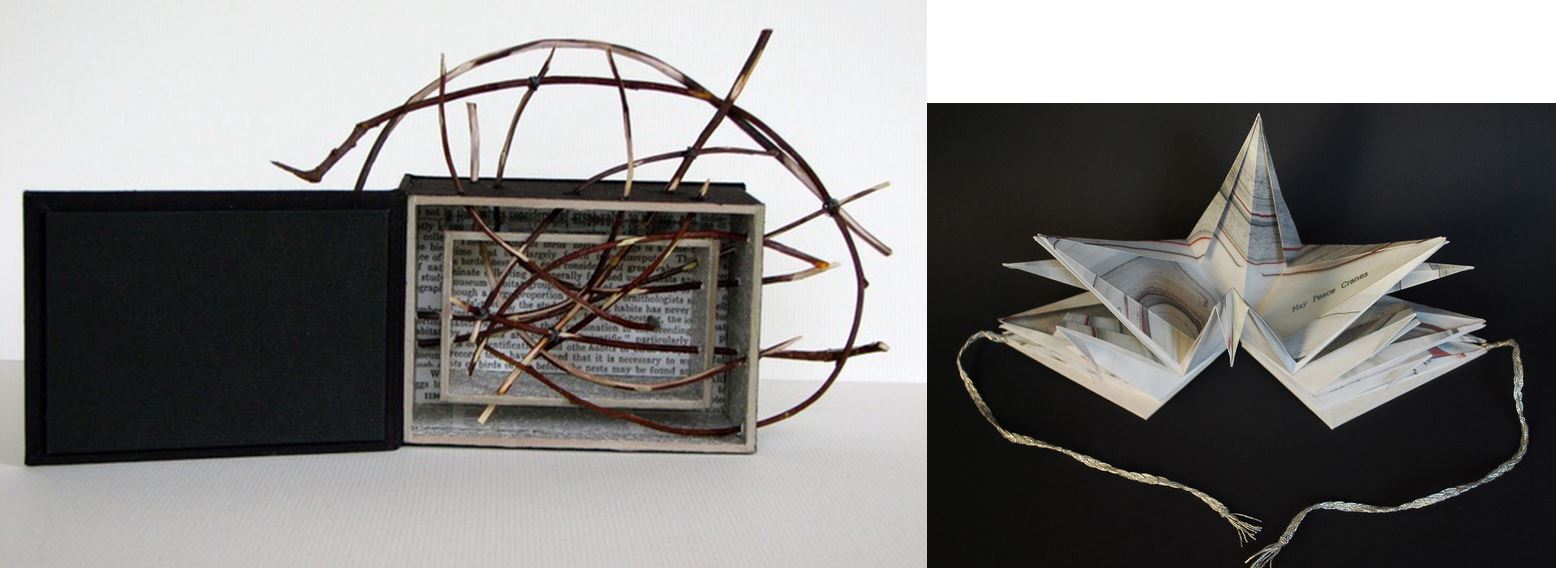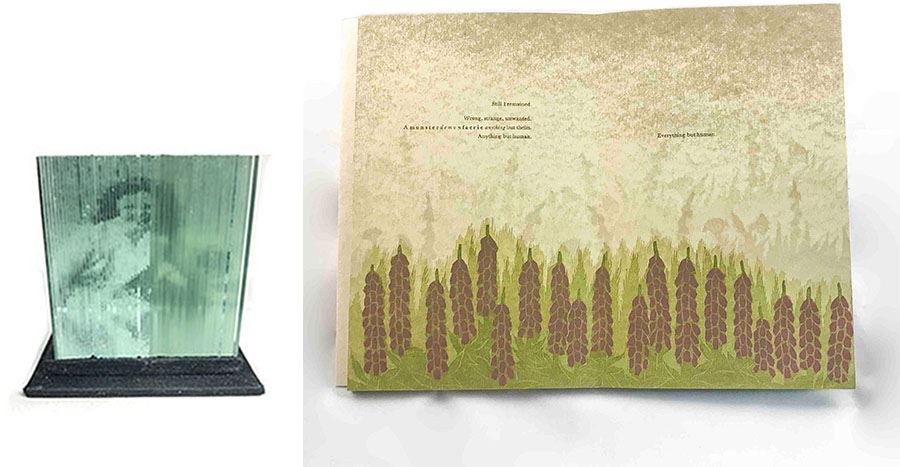At the time of this posting, I am in the process of overseeing and mounting an exhibition opening September 30 in Philadelphia’s majestic and rather cavernous City Hall, for the Philadelphia Center for the Book, with essential contribution, of course, from the other board members of PCB [1]. This exhibition, displaying work by 56 members of PCB, is titled Variations on the Artist Book. The proposal sent to the office that administers Art in City Hall had an educational focus, that of defining the artist book for people who are familiar with books, but have no concept of an artist book. Personal experience lies behind that idea, one I believe shared by many who will read this post: when I identify myself to people as a book artist, they invariably have absolutely no idea what I am talking about. (The most common assumption they make is that I am an illustrator.) The exhibition space is a hall near the mayor’s office, so most of the audience will be people passing through for purposes other than looking at art. The pieces to be exhibited are the result of a call, resulting in 150 submissions, and what we are focusing on thus is dependent on what happened to come to us. The works are displayed in five large locked cases (72”h x 94”w x 30”d). The text in the books can be pointed to, looked at, but rarely absorbed. And the issue of narrative or, more broadly, sequence as relates to image as well as text — central to my interest in the artist book — must, necessarily, be ignored.
Nonetheless, the exhibition attempts to present the complex amalgam of image making, structure, text, and materials that go into an artist book. The idea was that each exhibition case would focus on a particular aspect of the artist book. That goal immediately offered problems. As a result of the submissions we received and in the service of exposing people to art that is centered in some way on the book, the exhibition that has emerged broadens the idea of the artist book. That said, I was struck by the extent to which the pieces reflected one of Johanna Drucker’s central dictums in defining such books, one that resonates with me: that there is a “dialogue” among the work’s “elements,” that the book is not a container but a medium. [2]
One complication, of course, is working out five different focuses, one for each case. I gave up the idea of their being neatly parallel. The pieces inevitably fit under more than one idea; some could go as well into any of the groupings. Short texts in each case will point to what the viewer is invited to focus on. Cases 4 and 5 will also have brief descriptions of the various processes mentioned (e.g., letterpress, linoleum cut, screen printing, etc.).
This is what I have come up with:
Case 1: The focus is on bindings and kinds of structures, e.g., concertina, codex, pop-up, flag, flexagon, tunnel book, boxes.

Dee Collins Sunset Madelyn Garrett Sekhmet’s Casket
Case 2: The focus is on sculptural pieces and/or structures that have metaphoric or symbolic connotations, e.g., a piano hinge to mimic a compact, a clock case as the container/cover, a structure that evokes nesting, cranes as origami pages (the last two referring to the books imaged below).

Paulette Rosen Nesting Boxes Eriko Takahashi Peace Crane (03.11.2011)
Case 3: Here the focus is on text and image. The case includes wordless books, books in which the text exists primarily or totally as image, in which texts insists on being read as well as being seen, in which imagery is the context for the text, and so forth.

Roberta Lavadour Relative Memory IV Sara Moose-Torres Changeling
Case 4: The focus is on the process of making. This covers printmaking and other processes, including papermaking, eco printing (see the left image below), pulp painting, letterpress, drawing, non-silver photography. But it also includes process separate from specific media: the process of creating an altered book, or (see the right image below) a process that entails cutting lines from letters written by the artist’s mother, collaging them onto panels, then painting and binding them into a book that can be displayed in various ways.

Mary Elizabeth Nelson Mirror Image Karen Viola Just a Few Lines
Case 5. The focus here is on materials, the materials used in processes, e.g., linoleum, type, and plates, and also materials present in the final work, e.g. acrylic, graphite, handmade paper, found objects, plexiglass, stamps, organic material. Below, on the left, the pages are cheese; on the right, the embroidered thread that forms the text is the artist’s hair.

Ben Denzer 20 Slices Sun Young Kang Hair (머리카락)
I realize, with regret, that the text that introduces the viewer to the focus of each case will rarely be read. The visual is much more important and I am interested in seeing what visually emerges when the works are mounted. My hope is that the selection for each case will direct the viewer to the idea(s) behind it. Perhaps an exhibition which, rather than having a pre-determined focus, is based on an open call and mounted in an unfamiliar display space for an unfamiliar audience will actually result in some discoveries.
[1] Kara Petraglia (president), Amanda D’Amico, Karen Lightner, Alina Josan, and Marianne Dages.
[2] See, among other places: Johanna Drucker, “Critical Issues / Exemplary Works,” The Bonefolder: an e-journal for the bookbinder and book artist,” vol. 1, no. 2 (Spring 2005): 4.





